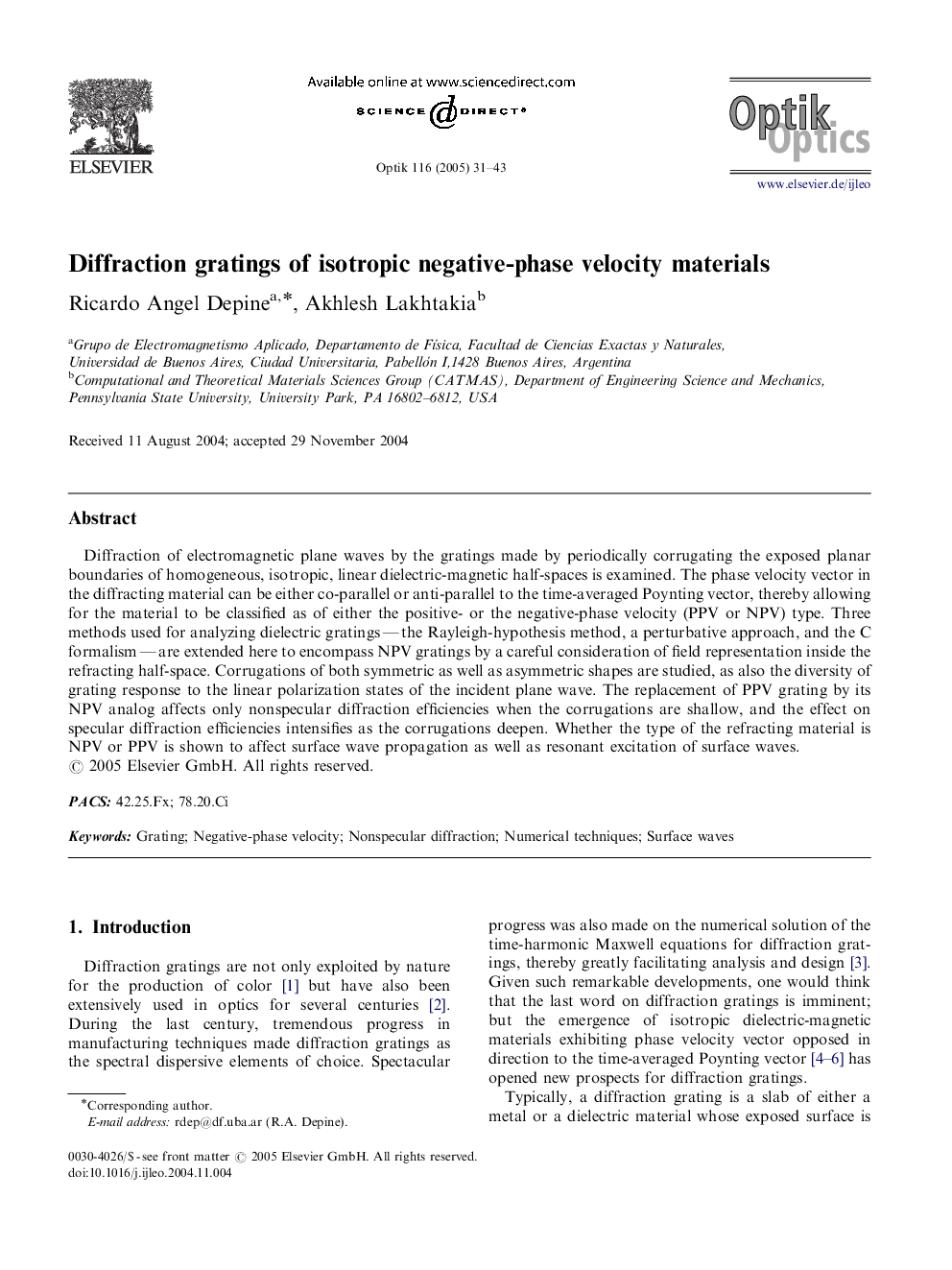| Article ID | Journal | Published Year | Pages | File Type |
|---|---|---|---|---|
| 10428802 | Optik - International Journal for Light and Electron Optics | 2005 | 13 Pages |
Abstract
Diffraction of electromagnetic plane waves by the gratings made by periodically corrugating the exposed planar boundaries of homogeneous, isotropic, linear dielectric-magnetic half-spaces is examined. The phase velocity vector in the diffracting material can be either co-parallel or anti-parallel to the time-averaged Poynting vector, thereby allowing for the material to be classified as of either the positive- or the negative-phase velocity (PPV or NPV) type. Three methods used for analyzing dielectric gratings - the Rayleigh-hypothesis method, a perturbative approach, and the C formalism - are extended here to encompass NPV gratings by a careful consideration of field representation inside the refracting half-space. Corrugations of both symmetric as well as asymmetric shapes are studied, as also the diversity of grating response to the linear polarization states of the incident plane wave. The replacement of PPV grating by its NPV analog affects only nonspecular diffraction efficiencies when the corrugations are shallow, and the effect on specular diffraction efficiencies intensifies as the corrugations deepen. Whether the type of the refracting material is NPV or PPV is shown to affect surface wave propagation as well as resonant excitation of surface waves.
Related Topics
Physical Sciences and Engineering
Engineering
Engineering (General)
Authors
Ricardo Angel Depine, Akhlesh Lakhtakia,
